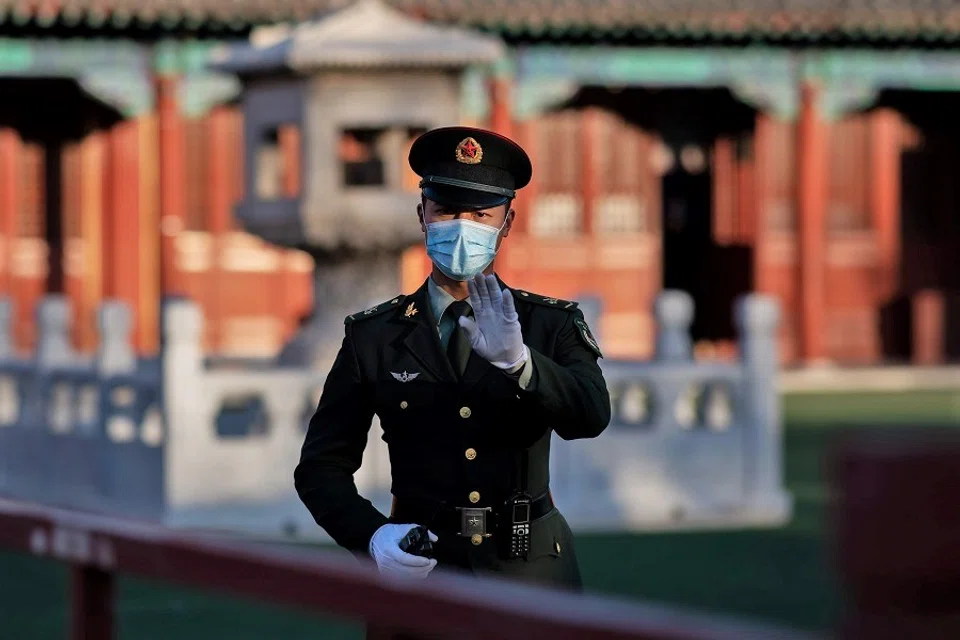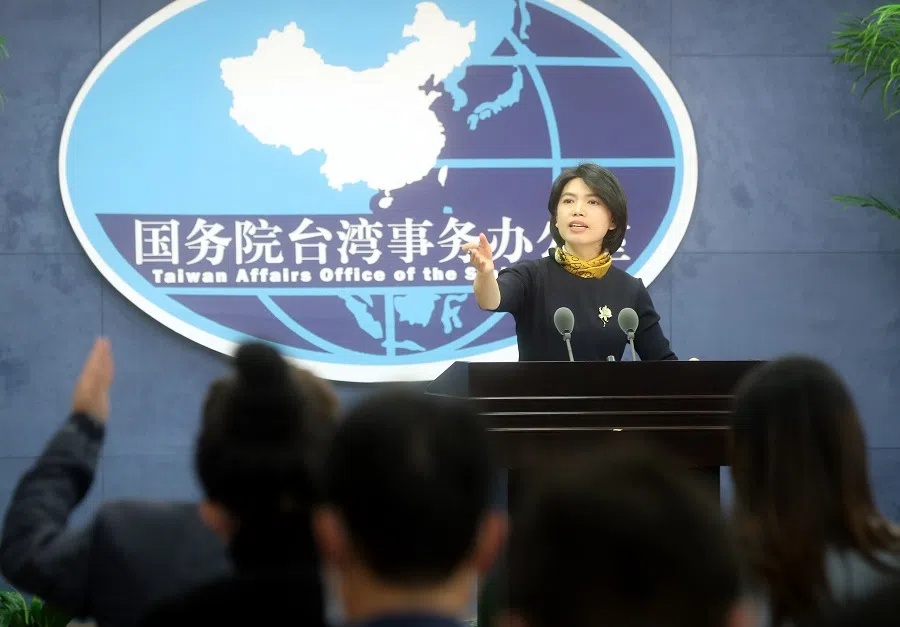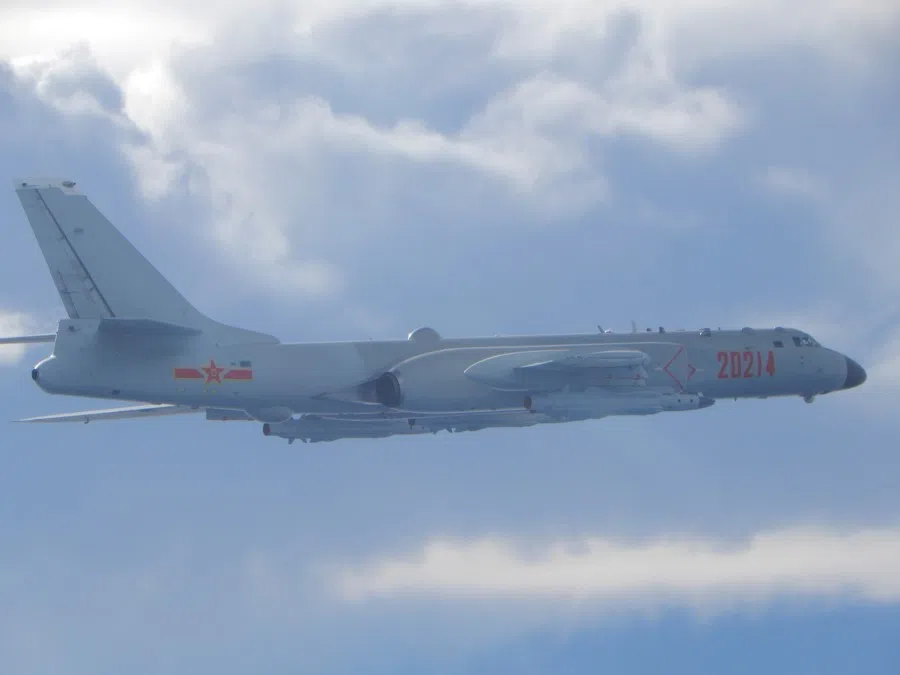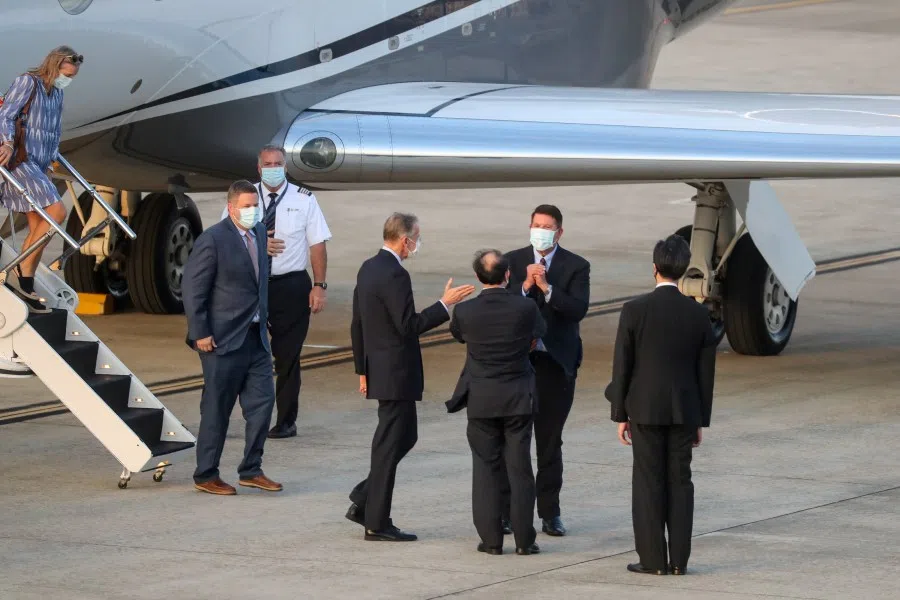Will Beijing roll out a 'national reunification law' targeting Taiwan?
A poster released by the Taiwan Affairs Office of the State Council and a question by a Xinhua reporter sparked speculations of a possible "national reunification law". Will Beijing roll out such a law targeting Taiwan, and would it set a timeline for "military reunification"? Zaobao associate editor Han Yong Hong examines the issue.

Talk of the possibility of a "national reunification law" has come up unexpectedly during the Taiwan Affairs Office of the State Council press briefing held on 16 December. This suggests that Beijing could unveil a new law that would further tighten its control over Taiwan and act as an added form of deterrence on Taiwan society and politics. Once again, people are concerned with the increased likelihood of a cross-strait military conflict.
It should be noted that the topic was not initiated by the spokesperson of the Taiwan Affairs Office, but from a question posed by Xinhua News Agency, a mainland state media.
Referring to a propaganda poster that had highlighted the Constitution's provisions on national unity posted on the official Weibo account of the Taiwan Affairs Office on 4 December, China's National Constitution Day, the Xinhua reporter had asked: Given its release under the current state of cross-strait relations, does this imply that the mainland could roll out a "national reunification law"?
The synchronised act of releasing the poster and Xinhua's question has since been regarded as Beijing testing the waters in public opinion over a "reunification law".

Taiwan Affairs Office spokesperson Zhu Fenglian maintained the mainland's stance in her reply without admitting to or denying the reporter's speculations. She said that the Constitution possesses the highest legal status, legal authority, and legal effect, and its provisions on national reunification are clear and must be firmly implemented. She reiterated that the mainland will take all necessary measures to promote peaceful reunification and "resolutely smash" any separatist attempts.
Quoting from the Constitution, the propaganda poster read, "It is the inviolable duty of all Chinese people, including our compatriots in Taiwan, to accomplish the great task of reunifying the motherland" and "The State may establish special administrative regions when necessary. The systems to be instituted in special administrative regions shall be prescribed by law enacted by the National People's Congress in the light of specific conditions".
The synchronised act of releasing the poster and Xinhua's question has since been regarded as Beijing testing the waters in public opinion over a "reunification law".

Logically speaking, it is unsurprising that Beijing would introduce a "national reunification law". Early in 2005, the National People's Congress passed the Anti-Secession Law, which went into effect immediately. A "national reunification law" could be an addition to the Anti-Secession Law, going one step further than the latter in terms of its naming and wording.
Judging from the actual cross-strait situation, Beijing's moves to advance the reunification process have been building up in capacity. Back in 2013, General Secretary of the Chinese Communist Party Xi Jinping once told Taiwan politician Vincent Siew during the latter's visit to the mainland that "the issue of political disagreements that exist between the two sides must reach a final resolution, step by step, and these issues cannot be passed on from generation to generation". Over the past two years, especially since last year, there has been a rapid rise of anti-China sentiments in Taiwan. Likewise, Beijing has also ramped up its promotion of reunification and efforts taken against separatist activities.
Last week, a Reuters special report said that after eliminating a popular challenge to its rule in Hong Kong, Beijing is now turning to Taiwan. And that in some respects, that battle has now begun, with the People's Liberation Army (PLA) launching irregular "grey zone" warfare to subdue Taiwan through exhaustion.
This is not a one-time military clash or amphibious warfare, but waves of threatening forays from the air, flying over the median line of the Taiwan Strait and entering Taiwan's air defence identification zone to erode Taiwan's will to resist.
Mainland China has an estimated 2,000 warplanes, while Taiwan only has about 400. Each time a mainland plane approaches, Taiwan has to deploy two to four planes to escort or intercept it, adding to fuel costs, wear and tear on the planes, and pilot fatigue.

Almost daily since mid-September, the PLA has flown more than 100 of these missions day-and-night. Admiral Lee Hsi-ming, former commander of the Taiwanese military, described these tactics as "super effective". Apart from this, mainland China is also ratcheting up pressure tactics through amphibious landing exercises, naval patrols, cyber attacks, and diplomatic isolation.
In fact, back in October, Taiwan media already warned of a war of attrition. Mainland China has an estimated 2,000 warplanes, while Taiwan only has about 400. Each time a mainland plane approaches, Taiwan has to deploy two to four planes to escort or intercept it, adding to fuel costs, wear and tear on the planes, and pilot fatigue. Over time, the Taiwan military would be caught between escorting and not escorting intruders - there is no real choice except to escort, which depletes resources.
In recent years, observers are increasingly hesitant to rule out the possibility of military reunification by the mainland, but most feel that there is no sign at the moment that the mainland is preparing for war against Taiwan.
The scenario painted by Reuters is realistic. But it must be noted that the large-scale and frequent PLA flights did not start because the Hong Kong issue has been resolved; they started with 18 mainland military planes being deployed as a warning on the second day of a visit to Taiwan by US Undersecretary for Economic Affairs Keith Krach, following which they became regular flights.

So, is Beijing ready to roll out a "national reunification law", or has it set a timeline for "military reunification"?
In recent years, observers are increasingly hesitant to rule out the possibility of military reunification by the mainland, but most feel that there is no sign at the moment that the mainland is preparing for war against Taiwan. Considering mainland China's unfavourable international position, taking military action is clearly unwise. However, looking beyond traditional warfare, taking action to wear down Taiwan's resistance or "beggaring" Taiwan economically is also a form of preparation for "reunification".
Beijing keeps emphasising that as long as there is a possibility of peaceful resolution, it will do all it can to make it happen. However, Wang Zaixi, former deputy director of the Association for Relations Across the Taiwan Straits of the State Council, also said publicly in November that there have been fundamental changes in Taiwan's situation and the possibility of peaceful reunification is shrinking. He proposed "fighting to bring about peace, and accelerating reunification with arms" (以战迫和、以武促统) - a combination of peaceful and military reunification.
Will mainland China roll out a "national reunification law" next year? This may depend on the cross-strait and global situation; there are also many possibilities in terms of the measures and definition of reunification within the law. But, with or without the "national reunification law", mainland China is probably already preparing to combine soft and tough measures.

![[Big read] Paying for pleasure: Chinese women indulge in handsome male hosts](https://cassette.sphdigital.com.sg/image/thinkchina/c2cf352c4d2ed7e9531e3525a2bd965a52dc4e85ccc026bc16515baab02389ab)


![[Big read] How UOB’s Wee Ee Cheong masters the long game](https://cassette.sphdigital.com.sg/image/thinkchina/1da0b19a41e4358790304b9f3e83f9596de84096a490ca05b36f58134ae9e8f1)
